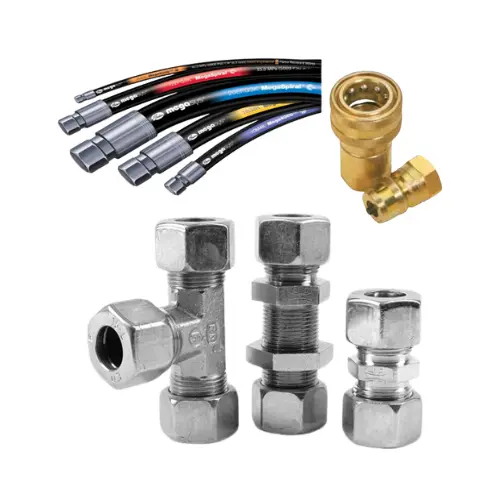Contact : +91-79045 61980 | Email: hydrofitengineers@gmail.com
Ball Valves
Ball Valves
Essential Components for Fluid Control in High-Pressure Environments
Ball valves are fundamental devices used for fluid control in a wide range of industries, particularly in applications involving high-pressure environments. These valves play a crucial role in regulating the flow of liquids and gases, offering reliable shut-off and control capabilities. This article explores the construction, working principle, advantages, and applications of ball valves, focusing on their significance in high-pressure systems.
Construction of Ball Valves
Ball valves consist of several key components that collectively enable their efficient operation:
- Body: The valve body forms the outer casing and provides structural integrity. It is typically made from materials such as stainless steel, brass, or other high-strength alloys to withstand the pressures and conditions of the application.
- Ball: The heart of the ball valve, this spherical component features a hole through its center. The ball is designed to rotate within the valve body, allowing it to control the flow of fluid or gas. When the hole aligns with the pipeline, flow is enabled; rotating the ball by 90 degrees blocks the flow.
- Seats and Seals: To ensure a secure and leak-free seal, the ball valve employs seats and seals made from materials like Teflon (PTFE) or other resilient polymers. These components prevent unwanted leakage when the valve is closed, enhancing safety and efficiency.
- Stem: The stem connects the ball to the valve’s actuator, allowing for rotational movement. The stem’s design is essential for transmitting the operator’s input to the ball’s position.
- Actuator: Ball valves can be operated manually using handles or levers, or they can be automated with electric, pneumatic, or hydraulic actuators. Actuators provide precise control over the ball’s orientation, facilitating remote operation and integration into automated systems.
Working Principle of Ball Valves
The working principle of ball valves revolves around the rotation of the ball within the valve body. When the ball’s hole is aligned with the pipeline, fluid or gas flows freely. Conversely, rotating the ball by 90 degrees closes the valve, halting the flow. This simple yet effective mechanism allows for rapid on/off control, making ball valves indispensable in emergency shut-off scenarios.
Advantages of using Ball Valves
- Quick Operation: Ball valves offer swift and efficient operation, critical for managing fluid flow promptly, especially in high-pressure environments.
- Durability: Built from robust materials, ball valves can withstand extreme pressures, temperatures, and corrosive conditions, ensuring long-lasting performance.
- Minimal Pressure Drop: When fully open, ball valves create minimal resistance to flow, resulting in lower pressure drop across the valve. This attribute is especially advantageous in high-pressure systems.
- Versatility: Ball valves are suitable for a diverse range of applications, from residential plumbing to industrial processes, due to their compatibility with various fluids and gases.
Applications of Ball Valves in High-Pressure Systems
Ball valves find extensive use in industries where high-pressure fluid control is crucial:
- Oil and Gas: Ball valves regulate the flow of crude oil, natural gas, and refined products in pipelines, wellheads, and refineries.
- Petrochemicals: These valves control the movement of chemicals in processes such as distillation, cracking, and synthesis.
- Power Generation: Ball valves manage steam and cooling water flows in power plants, ensuring efficient energy production.
- Aerospace: Ball valves are employed in aircraft fuel systems, where reliable shut-off is essential to prevent leaks.
Ball valves are integral components in fluid control systems, especially in high-pressure environments. Their robust construction, efficient operation, and versatility make them indispensable for regulating the flow of liquids and gases across various industries. From oil and gas to aerospace applications, ball valves play a pivotal role in ensuring safety, efficiency, and precise control in demanding conditions.

